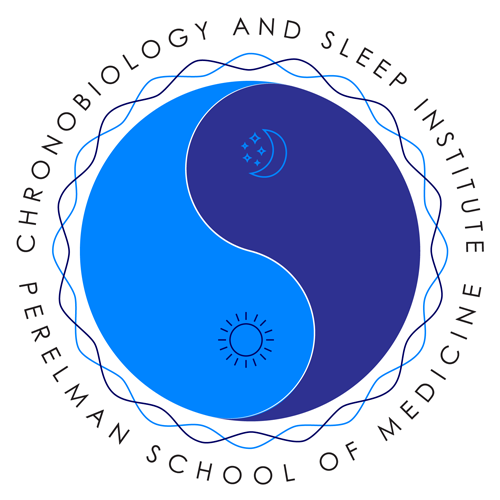The circadian clock is a biological timekeeper that drives roughly 24 rhythms of our physiology and behaviors (ex., sleep/wake, metabolism, feeding/fasting cycles) with daily adjustment to environmental light/dark cycles. Emerging evidence shows that the internal clock also determines the strength of our body immune responses to pathogenic insults, including viral infections and anti-pathogenic interventions, at different times of day1-3. Glucocorticoid (GC) is a corticosteroid hormone that is released from the adrenal glands (located adjacent to the kidney) in response to stress and circulates all over our body to regulate metabolic, immune and circadian physiology4. Clinically, this stress hormone helps suppress self-damaging immune responses and thus has been widely exploited in the treatment of auto-inflammatory diseases such as allergies, arthritis, and asthma5. Furthermore, GC therapy has also been tested against viral respiratory diseases such as Severe Acute Respiratory Syndrome (SARS)6, Middle East Respiratory Syndrome (MERS)7, and other influenza-associated pneumonia8.
Recently, a collaborative group of investigators in the United Kingdom reported in the New England Journal of Medicine (NEJM) that dexamethasone, a synthetic glucocorticoid, reduced death rate by about one-third among critically ill patients with Covid-199. Regarding the mechanism of action, glucocorticoid is thought to reduce hyper-active immune responses in the lung, such as acute respiratory distress syndrome (ARDS) caused by Covid-19 infection. Taking into account the rhythms of body physiology, a basic question is: what is the best time of day to administer the steroid medicine to increase its therapeutic safety and benefit?
Studies using fly, mouse, and human models have shown that host immune and inflammatory responses (ex., leukocyte recruitment and cytokine release) have salient daily rhythms with higher activity at night time (inactive phase) than in the day time (active phase)10. Conversely, GC level in our body is low in the night time and rises high to peak in the early morning. These findings explain, in part, why most hyper-inflammatory symptoms including severe sepsis tend to occur during night sleep11. In line with this evidence, clinical studies show that GC administration in the night-time (21 pm or 2~3 am) is significantly more effective in preventing auto-immune flare-ups than in the morning12. This is because a night-time GC dose reduces the rise of pro-inflammatory cytokines during night sleep. Based on these treatment outcomes, it is reasonable to assume that night-time GC delivery is likely to be more helpful in reducing severe immuno-pathological consequences (ex., cytokine storm) in patients with Covid-19 infection. In future clinical trials, it would be important to take the concept of chronobiology into account for improving the safety and efficacy of the first life-saving steroid therapy in the management of Covid-19.
1 Sengupta, S. et al. Circadian control of lung inflammation in influenza infection. Nat Commun 10, 4107, doi:10.1038/s41467-019-11400-9 (2019).
2 Gibbs, J. et al. An epithelial circadian clock controls pulmonary inflammation and glucocorticoid action. Nat Med 20, 919-926, doi:10.1038/nm.3599 (2014).
3 Ray, S. & Reddy, A. B. COVID-19 management in light of the circadian clock. Nature reviews. Molecular cell biology, doi:10.1038/s41580-020-0275-3 (2020).
4 Oster, H. et al. The Functional and Clinical Significance of the 24-Hour Rhythm of Circulating Glucocorticoids. Endocr Rev 38, 3-45, doi:10.1210/er.2015-1080 (2017).
5 Buttgereit, F., Smolen, J. S., Coogan, A. N. & Cajochen, C. Clocking in: chronobiology in rheumatoid arthritis. Nat Rev Rheumatol 11, 349-356, doi:10.1038/nrrheum.2015.31 (2015).
6 Stockman, L. J., Bellamy, R. & Garner, P. SARS: systematic review of treatment effects. PLoS Med 3, e343, doi:10.1371/journal.pmed.0030343 (2006).
7 Arabi, Y. M. et al. Corticosteroid Therapy for Critically Ill Patients with Middle East Respiratory Syndrome. Am J Respir Crit Care Med 197, 757-767, doi:10.1164/rccm.201706-1172OC (2018).
8 Lansbury, L. E., Rodrigo, C., Leonardi-Bee, J., Nguyen-Van-Tam, J. & Shen Lim, W. Corticosteroids as Adjunctive Therapy in the Treatment of Influenza: An Updated Cochrane Systematic Review and Meta-analysis. Crit Care Med 48, e98-e106, doi:10.1097/CCM.0000000000004093 (2020).
9 Group, R. C. et al. Dexamethasone in Hospitalized Patients with Covid-19 - Preliminary Report. N Engl J Med, doi:10.1056/NEJMoa2021436 (2020).
10 Tsoumtsa, L. L., Torre, C. & Ghigo, E. Circadian Control of Antibacterial Immunity: Findings from Animal Models. Front Cell Infect Microbiol 6, 54, doi:10.3389/fcimb.2016.00054 (2016).
11 Truong, K. K., Lam, M. T., Grandner, M. A., Sassoon, C. S. & Malhotra, A. Timing Matters: Circadian Rhythm in Sepsis, Obstructive Lung Disease, Obstructive Sleep Apnea, and Cancer. Ann Am Thorac Soc 13, 1144-1154, doi:10.1513/AnnalsATS.201602-125FR (2016).
12 Cutolo, M. Circadian rhythms and rheumatoid arthritis. Joint Bone Spine 86, 327-333, doi:10.1016/j.jbspin.2018.09.003 (2019).



